Last week at the fashion shows in Paris I saw a woman who looked, to all intents and purposes, like the Leaning Tower of Pisa, tilting by at least 45°. Sensing that she was being quizzically watched, she straightened herself up, and took tentative baby steps to her seat, barely able to move more than a cobblestone at a time. It was Dita von Teese, a burlesque dancer who has achieved a certain level of fame thanks largely to her diligently maintained, cartoonish sexiness, which was certainly on display at the Louis Vuitton show, hoiked up on heels higher than the length of my hand. Three years ago I interviewed Von Teese and she claimed that she "literally" could not put her feet flat on the floor, having worn such high stilettos for so long. "So you stand on your tiptoes in the shower and stuff?" I asked. "Yes," she replied, with a solemn purse of blood red lips.
At the time, this seemed like confirmation of Von Teese's strange devotion to extreme, highly sexualized footwear, and, next to the rest of us in the room that day, decidedly unique. However, when I saw her last week, Von Teese's feet, while still defying basic anatomy laws, did not look quite so unusual any more. Many of the journalists at the shows had been complaining about the lack of obvious trends coming from the catwalks, but one look at the journalists themselves revealed quite an obvious one: fetishistic footwear.
This season has already been dubbed the one of "extreme footwear" but the prevalence ("dominance" is probably the more accurate if not exactly delicate word here) of shoes that can rightfully be described as fetishistic (defined by the Oxford English Dictionary with typical dryness as "an object ... which serves as the stimulus to, or the end in itself of, sexual desire") is remarkable. Grazia recently featured a whole page of what it called "shoots", which are basically ankle boots, savagely cut as low as possible and generally pointed of toe, giving one the look of a Bond assassin, flick knife concealed in the aggressive little tip. Patent leather is easily the most popular shoe material this season and heels are vertiginous (or, for some of us, nearly suicidal). Balenciaga's multi-colored heels wouldn't look out of place on a shelf of sex toys. Even those who you might think would be more averse to playing the sexual aggression card seem to be taking inspiration from sex shops.
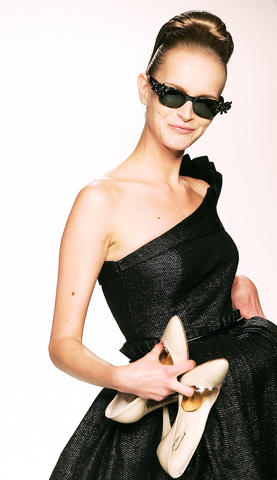
PHOTOS: AGENCIES
Burberry has knocked out shoes for this season that wouldn't necessarily look out of place in a downtown speakeasy. Patent-leather ankle boots and silver platform stilettos seem a long way from tweeds and quilted tartan blankets. Even the icily beautiful Keira Knightley was photographed in Vogue two months ago wearing galumphing patent wedges with corset lacing up the side that, frankly, looked as if they were made for a transvestite prostitute. Go down the high street, from Topshop to Faith to Russell & Bromley, and there are shoes as sharp and scary as the ballet pump was sickly sweet. Next season looks even more extreme, with Chloe making shoes that can only be described as peep-toe rubber weapons, as well as Balenciaga's beaded heels that bring to mind the title of the Almodovar film, Tie Me Up, Tie Me Down. And now Agent Provocateur, the company that took seductive lingerie if not to the mainstream then at least out of the trenches of itchy perversion, is this month launching a range of shoes that it describes as "fierce and fetish."
This isn't wholly unpredictable. Collections for this season were full of hard fetishistic elements: leather dresses, thick quilted gloves and miniskirts and dresses in gabardine (spill-proof clothes seem to be very popular in the fetish world, for reasons we need not ponder for too long). Funnily enough, though, few women who work during daylight fancy trussing themselves up like Lily Savage, no matter how - to use the frequent justification of designers who keenly promote the look - comfortable they are with their sexuality. Hence the trend has been most successful in a slightly more discreet accessory: shoes.
"You can channel that feeling into your shoes in a way you can't with your clothes," says Serena Rees, co-founder of Agent Provocateur. "If you work in a bank, you can just wear your massive heels beneath your suit, suggesting something underneath." This kind of contrast does sound quite seductive at first: Von Teese, for example, combined her heels at the fashion show with an almost demure Louis Vuitton knee-length green dress, keeping her from tipping over into camp cliche territory.
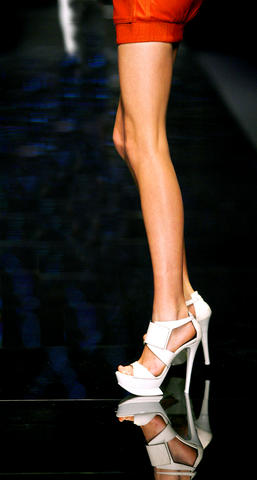
PHOTO: AGENCIES
Think about it for a few more seconds and memories of Teresa May's leopard-print heels at the 2002 Tory conference are brought painfully to mind. And that is my qualm with fetish shoes. There is, surely, something irredeemably tacky about them that evokes suburban swapping parties or desperately flirtatious wannabe Wags.
Rees, unsurprisingly, disagrees: "Our take has always been to make a woman feel good about herself," she says. But how does wearing shoes that squeeze and tilt make anyone feel better? "A woman who feels sexy feels good about herself, but she has to be doing it for herself, not a man. I want to look in the mirror and appreciate myself."
This brings one to the familiar knotty question about dressing sexily and, in a more general sense, fashion as a whole. Fine, a woman feels better if she believes she's looking good, but isn't that just because she's getting sexual attention, in which case, isn't it ultimately another example of women suffering physical discomfort for male attention?
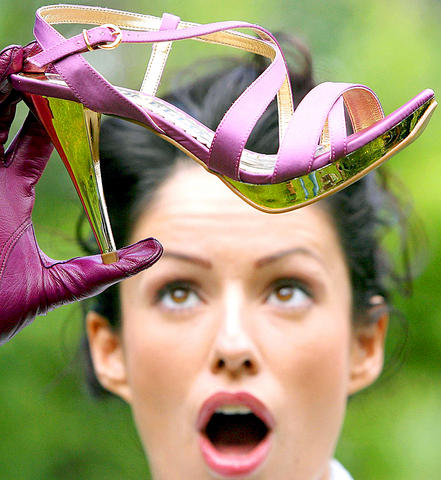
PHOTO: AGENCIES
Currently in Paris there is an exhibition that, at first, seems to confirm this. David Lynch and Christian Louboutin have collaborated for the baldly named photography show Fetish, in which two generally faceless women pose in a Blue Velvet-type atmosphere for Lynch, wearing Louboutin shoes that are definitely not made for walking, but would probably be perfect for walking over a grateful masochist. The shoes are so high the women are basically en pointe, and that's just the shoes they can actually wear, as opposed to the ones dotted with nails and spikes. The shoes themselves are displayed on plinths in front of the photos and I wrenched my foot into the most innocuous, which was red (of course), indescribably high (naturally) and with a spike for a heel (goes without saying). Truly women were put on this earth to suffer, I mused, right before I fell over and banged my chin on the plinth. Only two men, I grumpily thought, could come up with this exhibition.
"But heels celebrate a woman," Rees protests. "They add and emphasize a woman's curves - they're not about skinniness." And she's right: in the notes accompanying the Parisian show, Louboutin writes, "David had only one demand: 'No bones.'" And the models are, indeed, lusciously curvy, a gorgeous antidote to the anaemic twigs on the catwalks. Rees' devotion to this style of footwear means that for her own line she knows how to make them wearable beyond the confines of a fashion shoot: "I know where the padding should be and how to make a heel look higher than it is. I've got great runaround heels but also ones I can only wear as far as my bedroom door."
Certainly there were no men around during the fashion weeks whom the fetishistically shod fashion editors might be trying to entice; instead, their shoes completed their strident, scary facades, that are de rigueur when spending four weeks jostling with your competitive colleagues. "A man might look at a woman in massive heels and think that she's teetering around, but she's not," says Rees. "She's striding forward." Albeit just a few inches at a time.
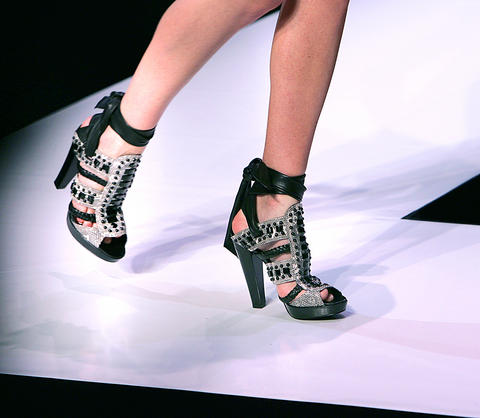
PHOTO: AGENCIES
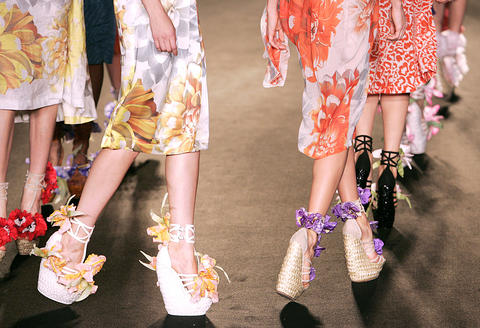
PHOTO: AGENCIES
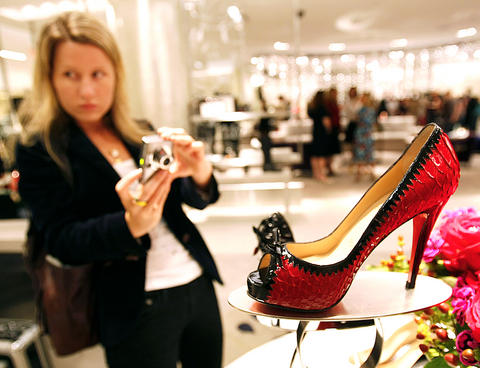
PHOTO: AGENCIES
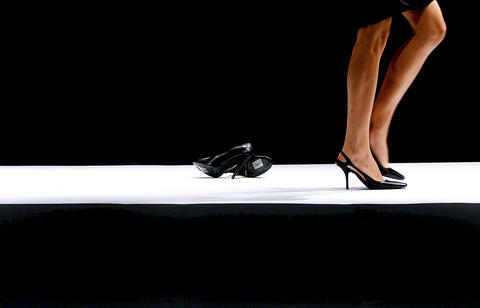
PHOTO: AGENCIES

On April 26, The Lancet published a letter from two doctors at Taichung-based China Medical University Hospital (CMUH) warning that “Taiwan’s Health Care System is on the Brink of Collapse.” The authors said that “Years of policy inaction and mismanagement of resources have led to the National Health Insurance system operating under unsustainable conditions.” The pushback was immediate. Errors in the paper were quickly identified and publicized, to discredit the authors (the hospital apologized). CNA reported that CMUH said the letter described Taiwan in 2021 as having 62 nurses per 10,000 people, when the correct number was 78 nurses per 10,000

As we live longer, our risk of cognitive impairment is increasing. How can we delay the onset of symptoms? Do we have to give up every indulgence or can small changes make a difference? We asked neurologists for tips on how to keep our brains healthy for life. TAKE CARE OF YOUR HEALTH “All of the sensible things that apply to bodily health apply to brain health,” says Suzanne O’Sullivan, a consultant in neurology at the National Hospital for Neurology and Neurosurgery in London, and the author of The Age of Diagnosis. “When you’re 20, you can get away with absolute

When the South Vietnamese capital of Saigon fell to the North Vietnamese forces 50 years ago this week, it prompted a mass exodus of some 2 million people — hundreds of thousands fleeing perilously on small boats across open water to escape the communist regime. Many ultimately settled in Southern California’s Orange County in an area now known as “Little Saigon,” not far from Marine Corps Base Camp Pendleton, where the first refugees were airlifted upon reaching the US. The diaspora now also has significant populations in Virginia, Texas and Washington state, as well as in countries including France and Australia.

May 5 to May 11 What started out as friction between Taiwanese students at Taichung First High School and a Japanese head cook escalated dramatically over the first two weeks of May 1927. It began on April 30 when the cook’s wife knew that lotus starch used in that night’s dinner had rat feces in it, but failed to inform staff until the meal was already prepared. The students believed that her silence was intentional, and filed a complaint. The school’s Japanese administrators sided with the cook’s family, dismissing the students as troublemakers and clamping down on their freedoms — with